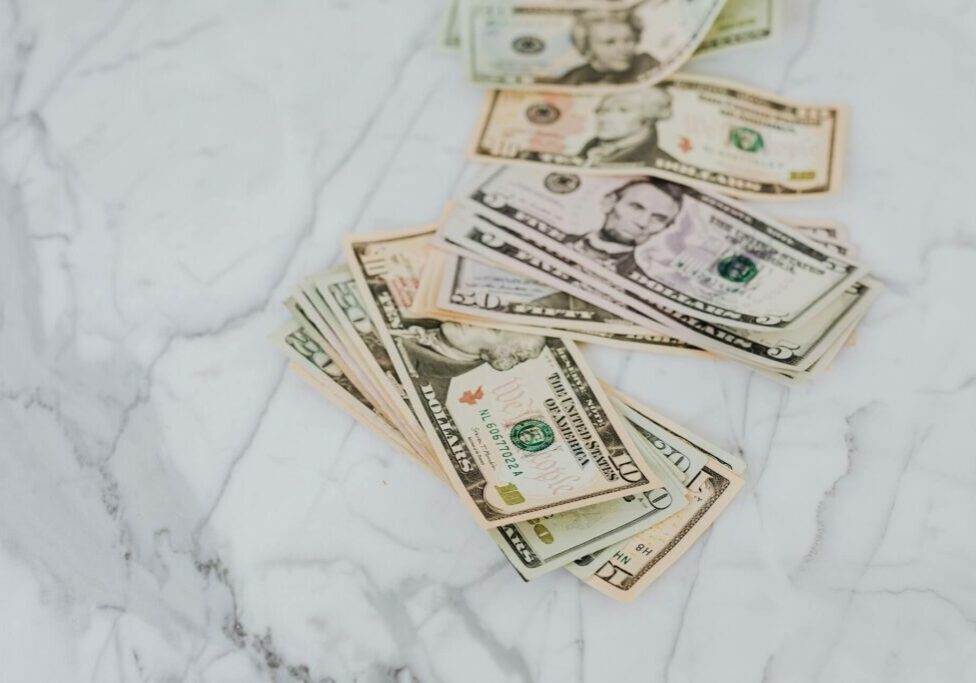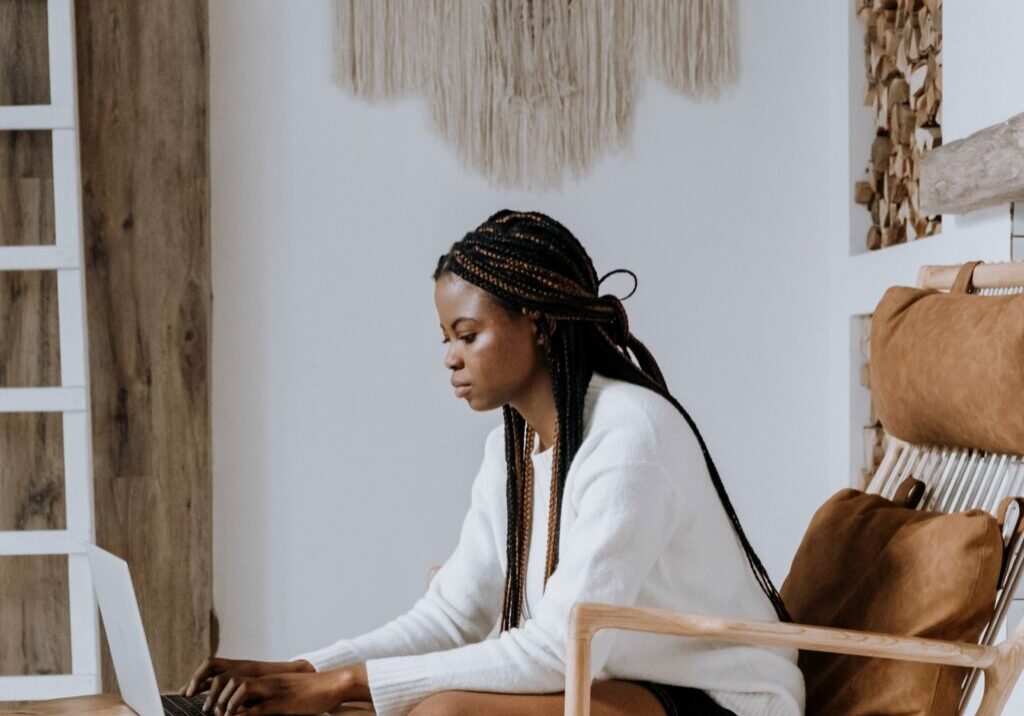Hi Designers!
I absolutely love the start of a new year! Not only is it the ideal time to start new year’s resolutions (I literally have the same ones every year), it is an accountant’s dream to start with a clean set of books. In fact, in our line of work, it is better than Spring cleaning.
As we are wrapping up 2020 financials, now is the time to reflect on the past year and learn from all the struggles it challenged our designers with. The aspect I enjoy most about my role at Logistis for Designers is working with a wide range of designers at different stages of their business. No day is the same and working with an experienced accounting team well versed in interior design ensures we have the resources to support designers of various scales.
So if I still have your attention, which I understand might not be the case since financial stuff is not every designer’s favorite topic, I want to help designers move forward with financial success in 2021 (and years to come) while remaining diligent and aware that 2020 provided priceless lessons that every designer can benefit from.
To start the conversation and head into 2021 with a strong outlook and trajectory for your business, I created a list of questions for you to ask yourself. Anyone who knows me is well aware that I love new technology, but when it comes to thinking creatively and business planning nothing gets my mind flowing like a piece of paper and pen. So grab a warm cup of tea, your writing tools and snuggle somewhere cozy like your favorite reading chair and start planning for a better 2021.
Bye 2020, don’t let the door hit you on the way out!
- Do you know your numbers? I choose this question as the number one question to ask yourself because it is the most important one as a business owner. It amazes me how many designers fell into the industry from designing for family and friends and their business has grown exponentially in a small period of time. Knowing how profitable their new business is an afterthought and not the most important running piece of their business. I completely disagree with this. Designers should be reviewing their financials on a quarterly basis and making adjustments to their business quarterly versus yearly. Financials are not only for tax filings, but they also measure the health of your business and as the owner, you need to be tuned in and understand your financials.
- What does it cost to run my business per month and do I have 3 months of savings set aside as a rainy day fund? This has to be one of the biggest lessons learned from 2020. When designers had to stop running their business due to the shutdowns and building restrictions, savings and funding became a lifeline. We worked closely with designers to keep their cash reserves on hand and find ways to lower costs immediately. PPP assistance and other streams of grants and funding were essentials to keep the doors open for many business owners. My advice, keep 6 months of savings in an emergency fund. Things can happen and it is best to be prepared than under-prepared. To know how to determine how much to have on hand in a savings account, you need to know what it costs to operate your business on a monthly basis. If you are integrated with Quickbooks Online, I highly advise running a profit & loss per month, so that they can determine what your average monthly costs are in order to budget for the following year. Remember to overestimate your cost versus underestimate. Develop a plan to keep building your emergency fund. We created a simple plug & play forecasting tool form, which helps measure how long your current cash reserves will hold over your business should your sales increase or decrease.
- What was your net income in 2020 and will my business continue to grow at the same rate? Should I change my business structure and pay myself as an employee? As soon as you get your yearly financials review them and look at your net income. Most designers ( and when I say most designers it really depends on your tax filing status and deductibles) have to pay 30-40% of their net income in income taxes. The good news is that you can limit the amount you pay in taxes by paying yourself as an employee and ultimately reducing your net income since you are increasing your operating costs for payroll. Payroll taxes are much lower than the 30-40% for income taxes. This is a very simple explanation of how being an employee can lower your tax bill and as always we always advise discussing with your tax preparer first. Need one? You can use ours -Meet Jeremy, most of our designers use him and he is a true expert. The bottom line now is the time to review your net income and do some tax planning.
- What is your plan for limiting your tax liability? When we mention taxes, there are typically two big tax bills designers have to be mindful of. #1 Taxes on the net gain from your business. As a business owner, you are required to file income taxes from your business financial statements and as mentioned above there are ways to limit that amount. Our second big piece of advice, set aside 30-40% of your net income quarterly in a savings account for income taxes. #2 The second tax liability for designers is sales tax. I can not tell you how many times, we start working with a new designer and sales tax is reported on the profit & loss. If this occurs you will have to pay income taxes on that amount. Instead, it should not even hit the P&L and rather be reflected as a liability on the balance sheet. Back to my main point is that if you file yearly or quarterly have a plan to keep that money off your books as income. Bookkeepers who do not have experience with sales tax often categorize it on your P&L which is the worst thing you can do because depending on your filing structure you will have to pay income taxes on your sales tax liability while overstating your income. Now is the time to make sure sales tax is reported accurately on your financial statements and move that money to savings so you are not tempted to send it as profit.
- What is my gross profit margin? How can I increase my profit margin? If you are a designer who uses Ivy/Houzz Pro, the benefit of the software is that you can create categories to match your financial records in Ivy and measure different aspects of your income versus the cost of goods. I highly advise analyzing your cost to income for the previous year and determine by categories where your margins are not profitable. For example, are you collecting enough income from your client to cover shipping costs? A healthy gross profit margin for designers can be anywhere from 30-40%. Determine if you are within that range and if not create a plan of action to reach your desired profit margin.
- Where do I want my business to be at the end of 2021? Do you have a five-year plan? The beginning of the year is the best time for business owners to create a list of goals. Set goals for the year and break them down into quarterly, monthly or even weekly tasks to reach your ultimate goal. Then add them to your calendar as a constant reminder to stay on track throughout the year. The most successful design businesses have a clear vision for the future and a detailed plan to reach their milestones.
- What is the biggest problem in my business and how do I fix it? This really requires the ability to move beyond the day-to-day and to figure out what issues small or big are at the center of your business operations. A small issue could easily grow into a larger issue when it could have been resolved earlier with little to no effect. For example, does it take forever for clients to pay an invoice? Not paying an invoice could delay ordering timelines or even worse you decide to pay for the goods prior to getting the payment and increase your out-of-pocket liability. Ask yourself, what can I change within my business to make my client’s payments more streamline? Or it could be that you spend hours creating CAD drawings and it delays the planning process. Consider outsourcing the task to someone who can do it better, faster and at a lower cost than what you charge your clients. As small business owners, we want to do it all, but it actually can prohibit your growth if you do not learn to let go of control.
- What types of projects were the most profitable in 2020 and what type of projects do I want to take on in 2021? Another aspect of Quickbooks Online reporting that is so helpful for our designers is to run a profit and loss statement per customer/project. Take the time to sit down and analyze which projects had the highest profit margin. Take it one step further and ask yourself which projects were most enjoyable for you. Were the projects that made the most money the most profitable? This analysis will help you determine which projects you want to take on in the future and if those “difficult” clients are worth the headache.
- Is my time billing process efficient and profitable? Most designers take years to master time billing and the ongoing debate is whether an hourly or flat rate is more profitable for designers. In all my years of working with designers, I still do not have an exact answer to which works better. Every firm is different and the answer might vary based on your business processes and clients. However, what I highly advise is to never work for free. If you decide on charging a flat fee, collect the funds prior to starting the work and if you decide on billing hourly, collect retainers in phrases and bill against the project’s open retainers. I have found that the only way for designers to keep flat fees profitable, is if they know exactly how long a project will take and if they have a solid business foundation. How will you handle if a project goes over the allocated time at a flat rate? Make sure your terms are listed clearly in your contract. Marissa and I sat down with Sayre Ziskin from SVZ Interior Design and got her thoughts on-time billing and which she prefers to use for her business. Here is the recording in case you missed it. Sold on billing hourly? Reach out to our team and we can help get you set up in Ivy/Houzz Pro for tracking your billable hours.
- Do I make the best use of my time? How can I work more efficiently while remaining profitable? This overlaps with what we discussed in question number 7. For years, I have tried to master marketing and social media for our business but it takes me forever and I realize I am not even good at it. For all my busy designers, who have so much business they have to turn it away the golden word is Outsource. Hire a design assistant to support in ordering, hire a CAD drawer and of course, I have to plug our services, hire a bookkeeper to manage all financial aspects of your business. Hire the expert to do the job and save your precious time to create projects that are Instagram-worthy.
I hope the above information will help get you in the right headspace for a successful year. We are certainly looking forward to working with you and seeing all the success that 2021 will bring for you!



